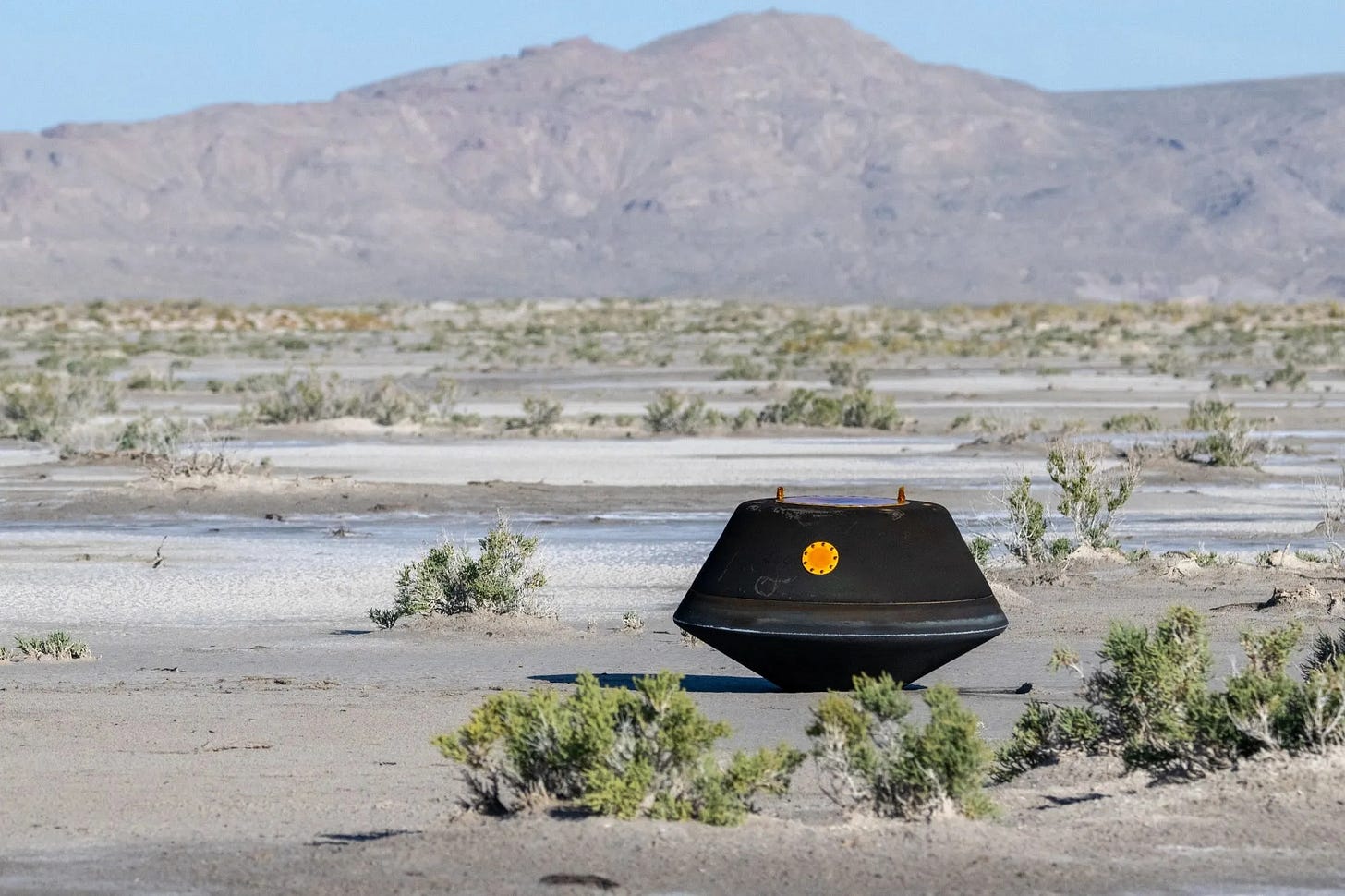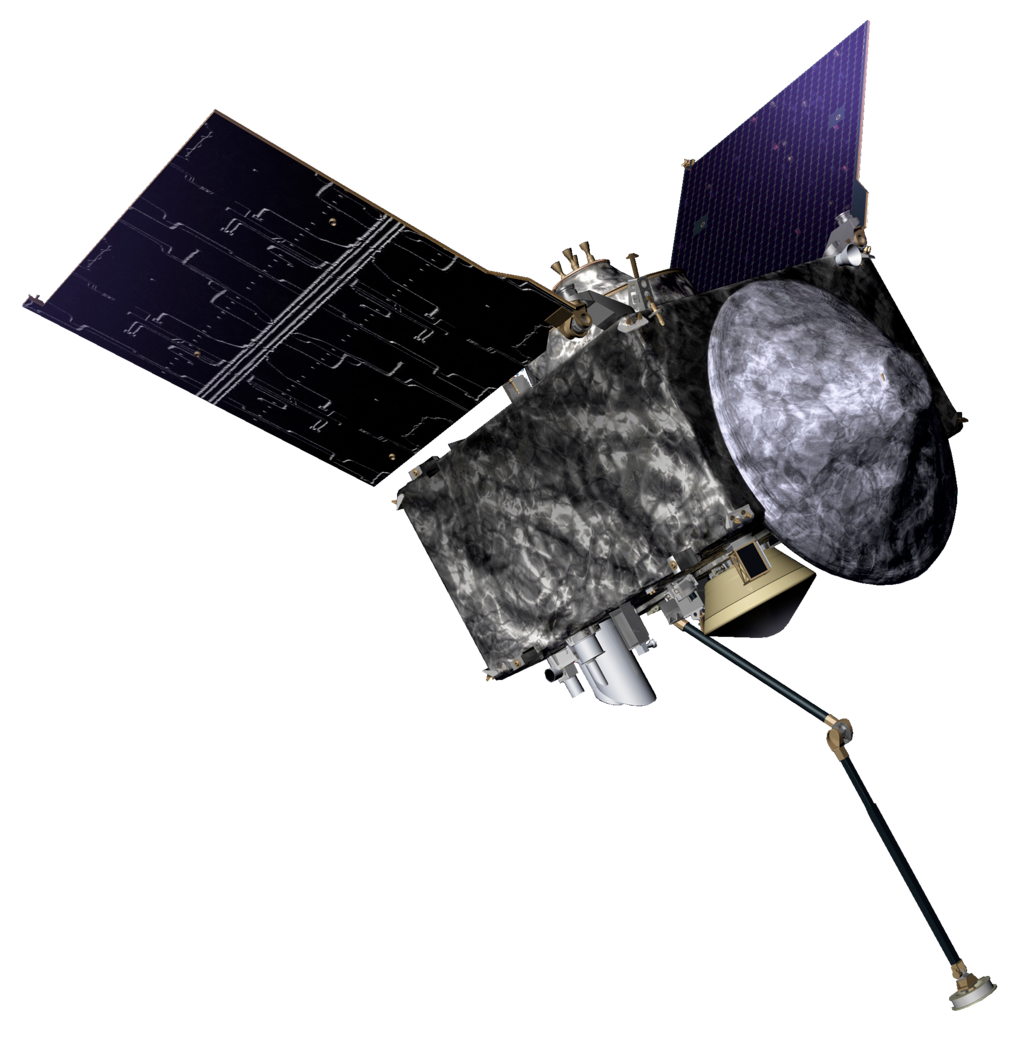OSIRIS-REx and the Bennu asteroid
Bennu sample can help human understanding about the Solar System
On September 24, the OSIRIS-REx spacecraft, a mission by NASA, released a capsule in Earth's vicinity, allowing it to be naturally guided by the planet's gravitational force. Afterward, the capsule used parachutes for a soft landing in the U.S. state of Utah. In this location, a team of experts eagerly awaited to recover the priceless cargo it carried: approximately 250 grams of rocks and dust that OSIRIS-REx had gathered from the surface of 101955 Bennu.
Today we will unearth the details of this mission.

What is Bennu and Why?
Bennu was first spotted on September 11, 1999, as part of a survey of Near-Earth asteroids conducted by the Lincoln Near-Earth Asteroid Research (LINEAR) project. At that time, it was designated as 1999 RQ36 and categorized as a near-Earth asteroid.
Bennu is an asteroid that follows an orbit around the Sun, completing one orbit roughly every 436 days. Periodically, it comes into relatively close proximity to Earth, occurring approximately every six years. This asteroid is predominantly composed of carbonaceous material, and its characteristics indicate that it assumed its current state and composition within a relatively short span, approximately 10 million years after the formation of our solar system. Remarkably, it has remained largely unchanged for the past 4.5 billion years. These remnants of celestial bodies are anticipated to provide insights into the building blocks of our solar system and the various processes that brought them together.
Furthermore, there's a prevalent belief among scientists that impacts from objects like Bennu on Earth could have transported essential compounds necessary for the emergence of life. Additionally, there is a remote possibility that Bennu might collide with Earth sometime between 2178 and 2290. Therefore, studying this asteroid holds the potential to offer valuable information that could aid in devising strategies to avert such a collision.
What is OSIRIS-REx?
In 2016, NASA initiated the OSIRIS-REx mission (Origins, Spectral Interpretation, Resource Identification, Security-Regolith Explorer). Two years later, scientists orchestrated its insertion into an orbit around Bennu, positioning it at a mere 2 kilometers above the asteroid's surface. Bennu itself was hurtling through space at an astonishing speed of 28 kilometers per second. On October 20, 2020, OSIRIS-REx executed a brief touchdown, allowing it to collect a sample from a pre-designated location on the asteroid before swiftly ascending. Subsequently, in May 2021, it embarked on its extensive return journey to Earth, where it ultimately released the capsule containing Bennu's regolith. Following this phase, it will transform into its OSIRIS-APEX configuration for a rendezvous with the silica-rich asteroid 99942 Apophis in 2029.
The OSIRIS mission serves a dual purpose. Over time, it collaborates with Japan's two Hayabusa missions, which have successfully gathered and brought back samples from 25143 Itokawa and 162173 Ryugu, contributing to our understanding of the history of the solar system. OSIRIS stands as NASA's third venture within its 'New Frontiers' program, following New Horizons, designed to explore the Kuiper Belt, and Juno, focused on studying the solar system's most gravitationally influential planet. While investigations of Bennu involve notable commercial aspects, including potential opportunities for space resource extraction and technologies to deflect celestial impacts, they are also part of a timeless quest—to unravel the origins of life and contemplate its destiny. Through OSIRIS's capsule, humanity virtually gains the ability to grasp the infinite within the palm of its hand.
What does the sample contain?
The objective of the OSIRIS-REx mission was to secure 60 grams of asteroid material. Teams of curation experts at NASA Johnson, operating in recently constructed clean rooms tailored specifically for this mission, have meticulously disassembled the sample return equipment over a period of ten days to gain access to the primary sample. Upon the initial opening of the science canister lid, an unexpected discovery was made: there was an excess of asteroid material covering the collector head, canister lid, and base. The presence of this surplus material temporarily complicated the careful process of collecting and containing the primary sample.
During the first fortnight, scientists conducted rapid preliminary examinations of this extra material. They utilized scanning electron microscopy, infrared measurements, X-ray diffraction, and chemical element analysis to gather crucial data. Additionally, X-ray computed tomography was employed to generate a three-dimensional computer model of one of the particles, revealing its intricate internal structure.
Initial assessments of the ancient Bennu asteroid sample, dating back 4.5 billion years, have revealed indications of a high carbon content and water. This combination suggests that the fundamental building blocks of life on Earth may exist within the asteroid. The OSIRIS-REx sample stands as the largest carbon-rich asteroid sample ever brought to Earth, promising to provide insights into the origins of life on our planet for many generations to come.
Over the next two years, the mission's scientific team will persist in characterizing the samples and executing the analyses essential to fulfill the mission's scientific objectives. NASA intends to safeguard at least 70% of the sample at Johnson for future research, benefitting scientists worldwide, including future generations of researchers.
What do you think about this Mission? Will it be able to unearth something unknown and exciting in the quest for origin of life and solar system?





Great article! Thanks : )
This newsletter is consistently fascinating and informative.